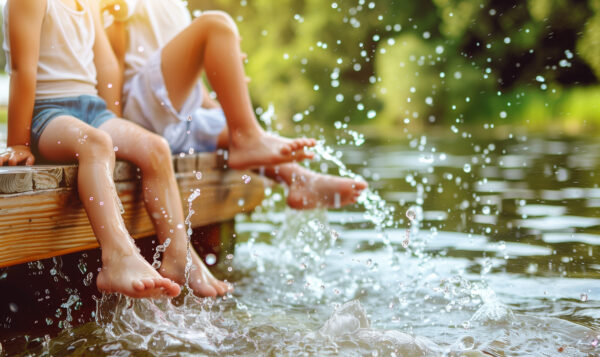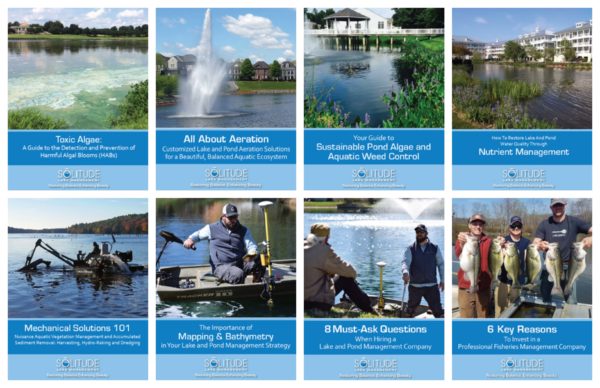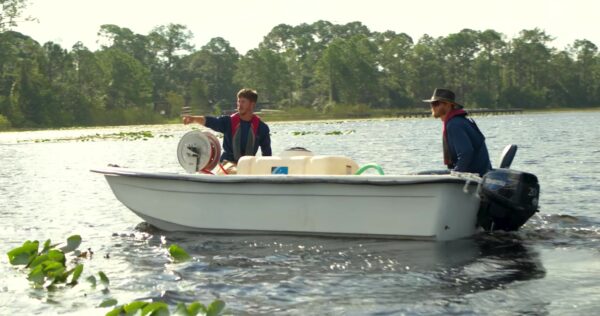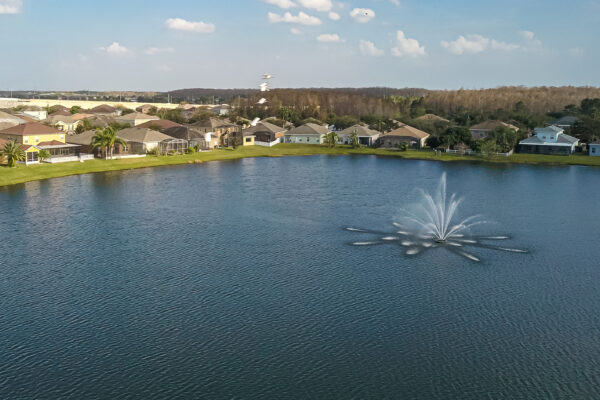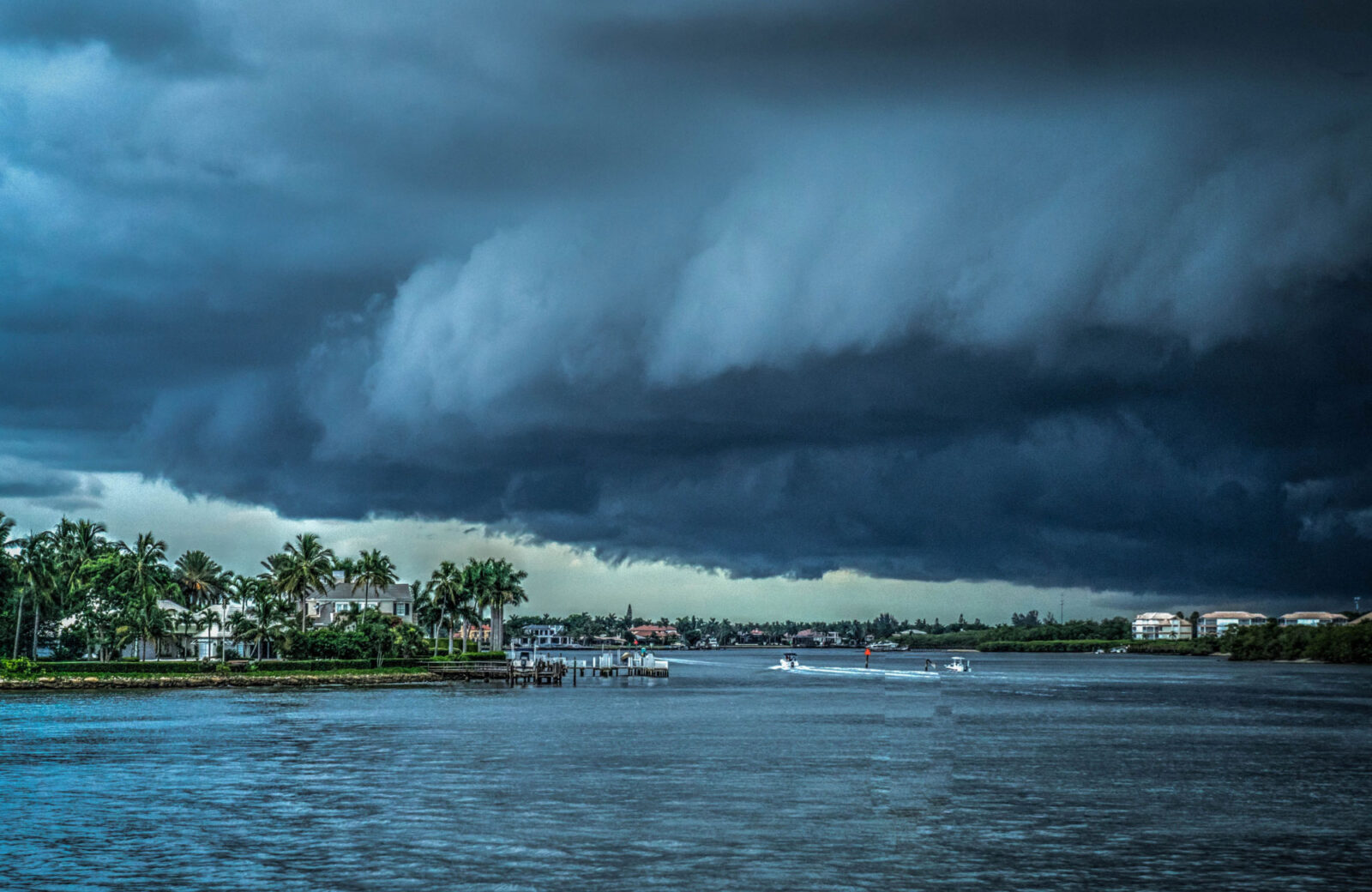
When a hurricane appears in the forecast, fear and urgency follow. Communities scramble to secure homes, buildings, and other critical infrastructure, but ponds are often overlooked. Heavy winds, wave action, and flooding can take a severe toll on your waterbody—particularly the shoreline—and lead to costly post-storm repairs. With hurricane season officially underway, now is the time to prepare your waterbody for this year’s major storms.
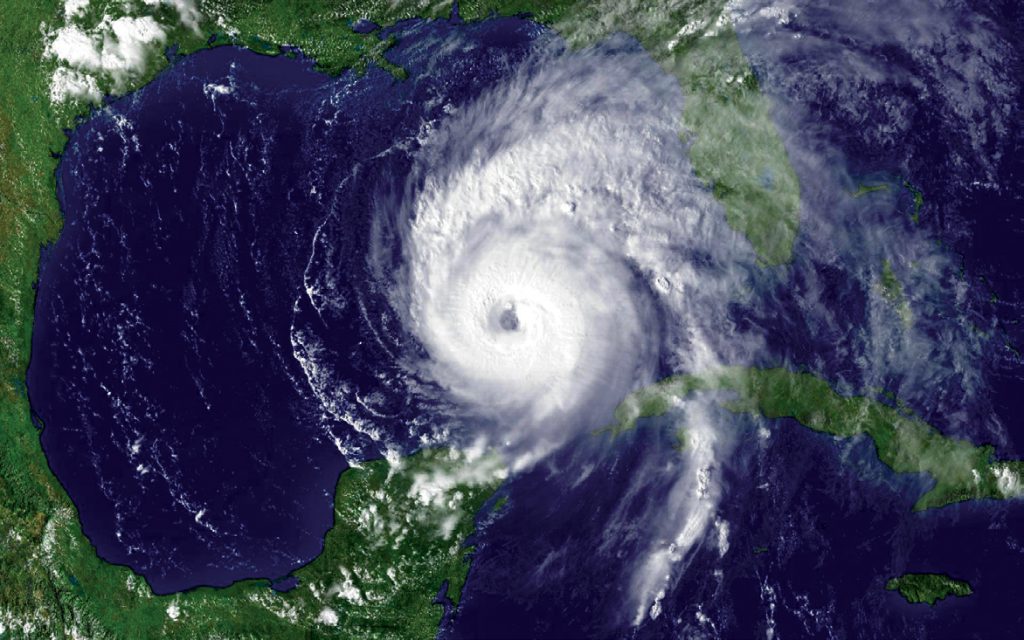
According to the National Hurricane Center, hurricane season runs from June 1 - November 31, with storm events peaking between August and October.
The role of ponds during storms
Whether located in a homeowners’ community, on a golf course, or a private property, it’s important to understand the role lakes and ponds play in flood prevention. Most urban waterbodies are man-made to collect and filter stormwater when it rains. However, during severe weather events, these systems can be overwhelmed and unable to function as designed. Flooding and heavy wave action can wash away shoreline sediment, destabilize banks, and expose pipes and tree roots below the soil, posing significant safety risks.
Even when a storm passes quickly, the effects on ponds and shorelines can linger for weeks or even months. By taking steps ahead of time to fortify your shoreline, you can help reduce long-term damage and make recovery efforts more time- and cost-efficient.

Pre-storm preparation
Secure the shoreline
Shoreline erosion is a natural process, but it can be accelerated by human activities such as poor landscaping, heavy foot traffic, or recreational use. If your shoreline shows signs of significant wear, bioengineering techniques can be used to reshape and securely anchor sediment in place, so it can better withstand upcoming storms and hurricanes. Regularly inspect your shoreline for early signs of erosion damage.
Clear blockages from stormwater equipment
Clear leaves, sediment, branches, and other debris from storm drains and pipes to ensure stormwater systems function properly before, during, and after a storm. When these systems are clogged, water can back up quickly, increasing the risk of flash flooding and shoreline deterioration.
Remove fountains and aerators
Remove fountains and aerators from the water before a storm to prevent them from becoming hazards. High winds and rising water levels can dislodge these systems, causing them to crash into the shoreline with enough force to gouge sediment, uproot vegetation, and damage bioengineering materials. Not to mention, the fountain or aeration system can get damaged and may need to be replaced.
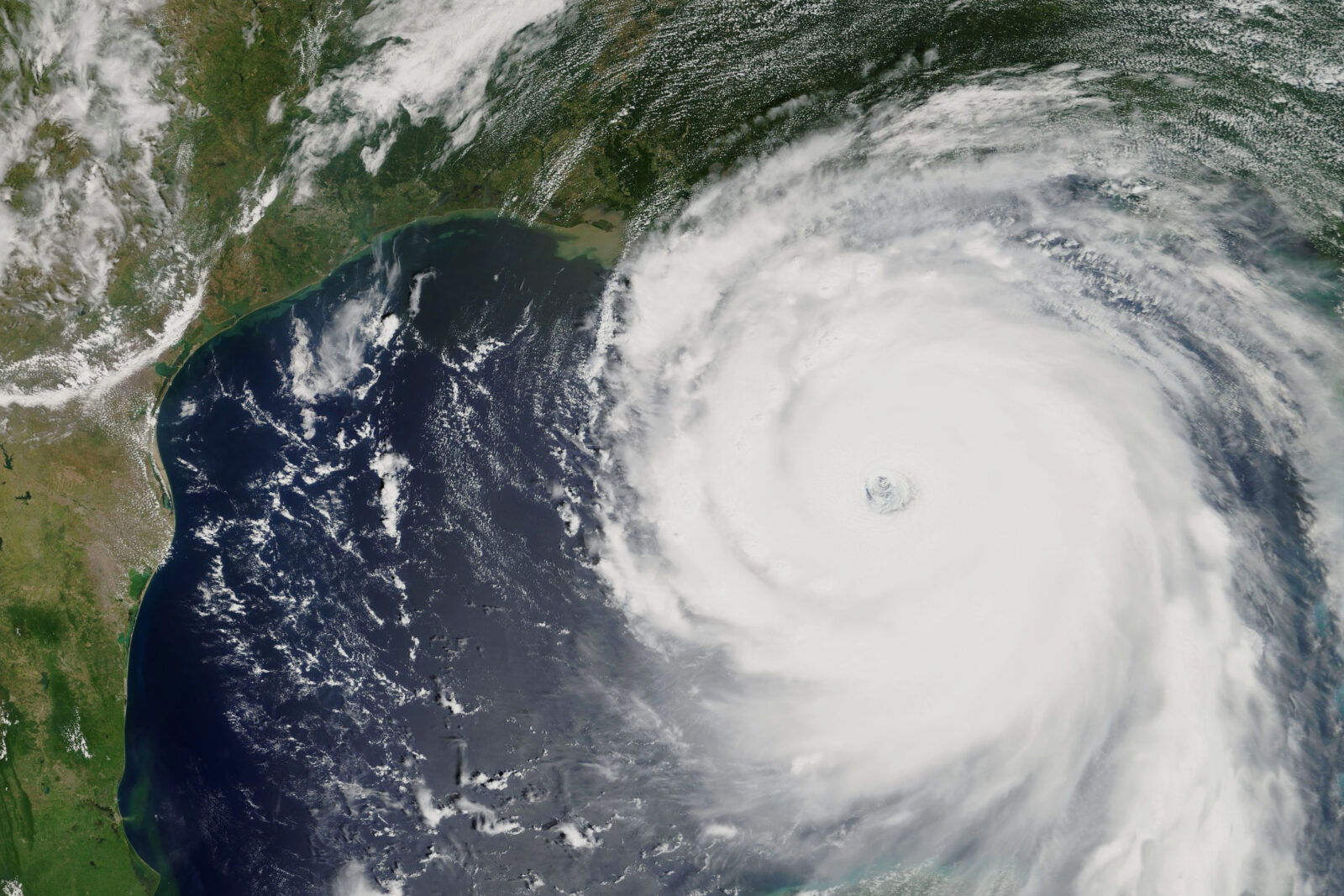
How to Protect Your Lake and Pond Management Assets From Storms and Hurricanes
The heavy rain and winds that accompany major storms like hurricanes or tropical storms can have a significant impact on your property, including recreational lakes, stormwater ponds, and fisheries. Download…
Post-storm recovery
Schedule a post-storm inspection
After a storm, damaged shorelines are vulnerable, which can create safety risks during clean-up efforts. Crumbling shorelines pose a significant liability risk as recovery workers, homeowners, or property managers collecting debris along the shoreline could fall. A professional inspection can evaluate the erosion damage and determine if a solution like bioengineered living shorelines is needed to restore the bank or if existing control systems require repair. Experts can also identify nuisance and invasive weeds, such as Phragmites, or harmful species, like armored catfish, that may have entered the waterbody during the storm. If left unmanaged, these invaders can cause detrimental shoreline damage and are extremely challenging to remove.
Clear Storm Debris
Remove debris from the shoreline, inlets, outlets, and stormwater equipment to restore proper water flow and prevent further erosion or flooding. Check for damage to pipes, culverts, or erosion control structures, and address any issues that could compromise the pond’s function during future storms.
Restore vegetation
Vegetation loss is common during storms and hurricanes. Replanting native grasses, shrubs, and emergent vegetation will help restore both the appearance and stability of the bank, as well as restore essential food and habitat for beneficial wildlife. Vegetative buffers should extend approximately 3-5 feet out from the perimeter of the shoreline.
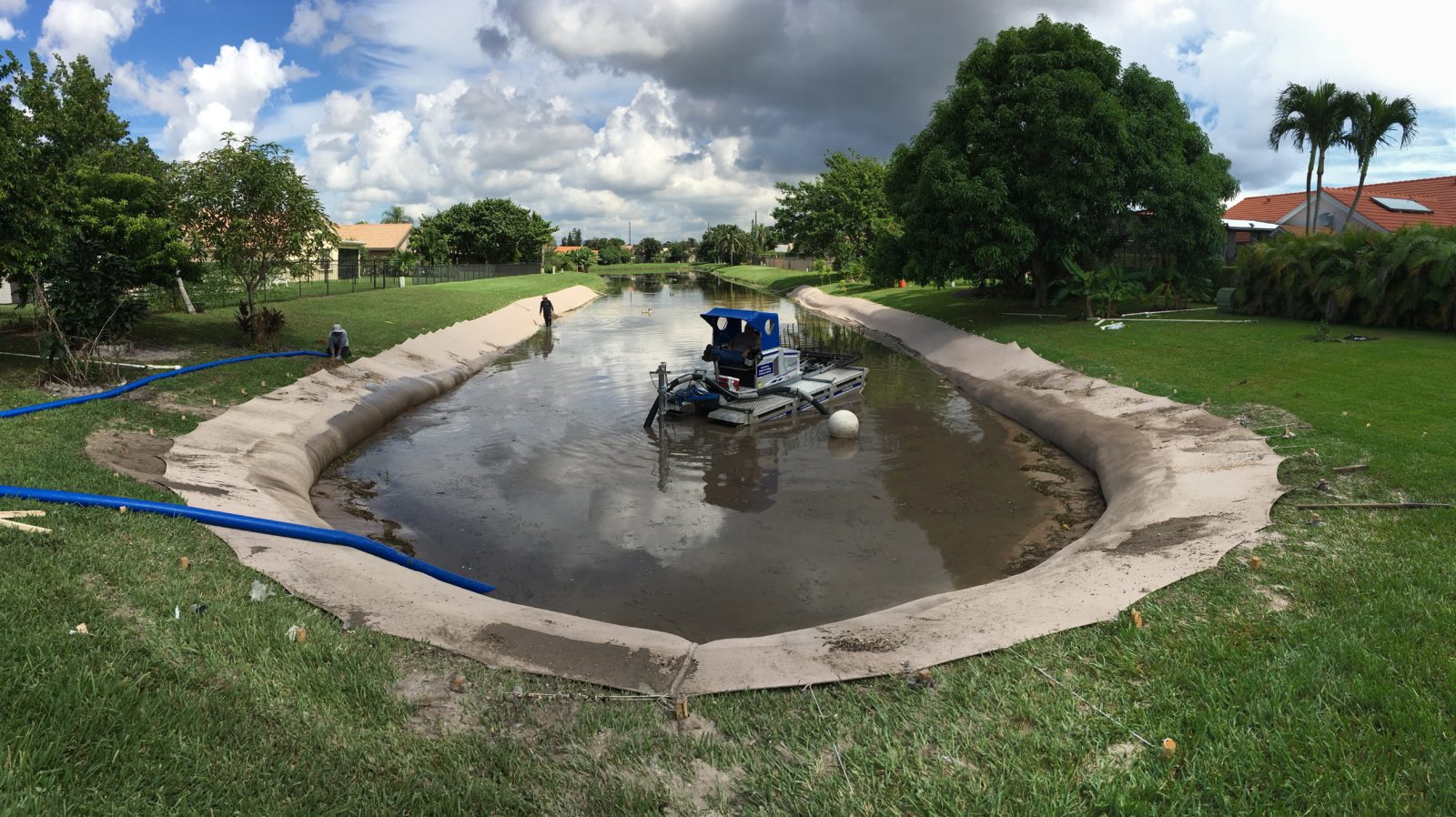
Protect Shoreline from Erosion Damage
Shorelines are often the first to feel the impact of a storm and the last to fully recover without proper care. As weather events grow more intense and unpredictable, maintaining a strong, stable shoreline isn’t just a best practice—it’s a necessity. Staying informed, taking early action, and knowing what to look for after the storm can make all the difference in protecting both your shoreline and surrounding infrastructure.
SOLitude Lake Management is a nationwide environmental firm committed to providing sustainable solutions that improve water quality, enhance beauty and preserve natural resources.
SOLitude’s team of aquatic scientists specializes in the development and execution of customized lake, stormwater pond, wetland and fisheries management programs. Services include water quality testing and restoration, algae and aquatic weed control, installation and maintenance of fountains and aeration systems, shoreline erosion control, muck and sediment removal and invasive species management. SOLitude partners with homeowners associations, golf courses, private landowners, businesses and municipalities. SOLitude Lake Management is part of Rentokil, a leading business services company, operating across the United States, Canada and Puerto Rico.
For more information, visit SOLitude Lake Management at solitudelakemanagement.com, and connect on Facebook, LinkedIn, Twitter, Instagram and YouTube.

